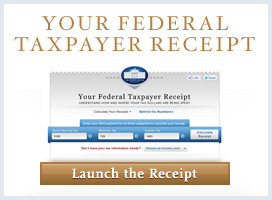Do Not Pay? Do Read This Post
Posted by on June 18, 2010 at 11:30 AM EDT
Over the past few weeks (and since taking office 16 months ago), we have focused on cutting waste, boosting efficiency, and creating a government more open and responsive to the American people.
Take "improper payments" for example. These are payments that government agencies make to people and entities who aren't eligible to receive government money, as well as payments to the wrong person, or in the wrong amount, or at the wrong time. In 2009, improper payments totaled nearly $110 billion, the highest amount to date. These payments are not only a waste of money, they also erode the public's trust in government.
The President has made a strong commitment to reducing, and eventually eliminating, these improper payments. Last November the President issued an Executive Order which will reduce improper payments by increasing transparency, enhancing agency accountability, and examining incentives for State and local governments. The President also signed a memorandum in March 2010 that supports the Executive Order by directing agencies to intensify and expand their efforts to recapture improper payments.
Today, we are announcing two additional steps in the fight against waste, fraud, and error.
This morning, the President issued a memorandum directing that a Do Not Pay List be established, a single source through which all agencies can check the status of a potential contractor or individual. Too often, an agency does not check all the different databases the government has or finds it difficult to do so. This denies agencies essential information they need to determine, for example, if an individual is alive or dead or if a contractor had been debarred. In fact, over the past three years, federal auditors have reported that the government paid out benefits totaling more than $180 million to approximately 20,000 Americans who were dead; and more $230 million in benefits to approximately 14,000 fugitive felons or those in jail and who are not eligible for benefits. The Do Not Pay List will allow Federal agencies to access this information in a more timely and cost effective manner and will help reduce improper payments made by the Government and help save taxpayer dollars.
The second action we are taking builds on the success we've had under the Vice President's leadership in making sure that Recovery Act dollars are well spent and not wasted through fraud, error or abuse. As the Vice President said today, "Everyone said it was impossible for a program this big to be administered without a significant amount of fraud and abuse. But because everyone knows how seriously we're taking this, and because of the sophisticated tools we have developed to root it out, we have thus far proved all of those doubters wrong. That dog simply hasn't barked. Of course, this isn't just about proving people wrong – it's about making government work better."
The Recovery Accountability and Transparency Board (RATB) has deployed a cutting-edge fraud mapping tool that leverages the latest technologies in data capture and analytics to identify potential fraud and error. As frequent readers of this blog will know, I am a huge fan of data and am really impressed by this tool. It gathers enormous quantities of information – in real time – and then analyzes the data and helps connect the dots to identify indicators of possible fraud or error.
The RATB has pioneered and refined the tool, and today, we are starting to roll it out for use across government. We are doing it first at the Centers for Medicare & Medicaid Services (CMS), a natural place to start since Medicare and Medicaid combined had about $65 billion in improper payments in FY 2009 – including about $47 billion in Medicare alone. This will help to meet the President's goal of cutting the improper payment rate in Medicare in half by 2012.
These efforts today illustrate what I spoke about last week: that we pay a price in allowing the IT gap between the public and private sectors to persist. The technology for this fraud mapping tool and a Do Not Pay List database exist, yet the government was not using it. With the steps we have taken this morning, we have narrowed that gap even just a bit, cutting waste and modernizing government for the benefit of the American people.
For more on these two initiatives, view our fact sheets on the Do Not Pay List and the Fraud Mapping Tool.
White House Blogs
- The White House Blog
- Middle Class Task Force
- Council of Economic Advisers
- Council on Environmental Quality
- Council on Women and Girls
- Office of Intergovernmental Affairs
- Office of Management and Budget
- Office of Public Engagement
- Office of Science & Tech Policy
- Office of Urban Affairs
- Open Government
- Faith and Neighborhood Partnerships
- Social Innovation and Civic Participation
- US Trade Representative
- Office National Drug Control Policy
categories
- AIDS Policy
- Alaska
- Blueprint for an America Built to Last
- Budget
- Civil Rights
- Defense
- Disabilities
- Economy
- Education
- Energy and Environment
- Equal Pay
- Ethics
- Faith Based
- Fiscal Responsibility
- Foreign Policy
- Grab Bag
- Health Care
- Homeland Security
- Immigration
- Innovation Fellows
- Inside the White House
- Middle Class Security
- Open Government
- Poverty
- Rural
- Seniors and Social Security
- Service
- Social Innovation
- State of the Union
- Taxes
- Technology
- Urban Policy
- Veterans
- Violence Prevention
- White House Internships
- Women
- Working Families
- Additional Issues

